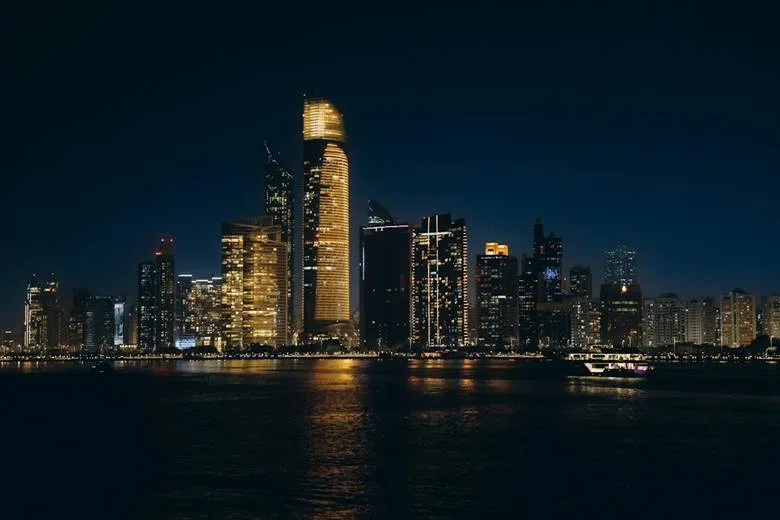You land in Dubai and the light hits different—sharp, clean, almost glossy. The heat’s there, but the pace steals the show: towers zipping past your window, wide roads fanning out, signs flipping from English to Arabic before you finish the last word. That little pause in your head—okay, what now—shows up, and suddenly the trip feels real. Hotels range from humble to haute. Trains hum, taxis glide, and drivers move with purpose. Simple works best here: a clear plan and a feel for how the UAE fits together. This guide gives you ideas on where to stay and how to move.
Where to Stay: Neighborhoods That Make Sense
List your plans, from morning meetings to midnight meals, then pick a base about 20 to 30 minutes from the spots you’ll visit most. Proximity to the Dubai Metro, easy taxi access, and beach or waterfront access usually decide it. If two areas feel equal, check late-night noise and airport time at rush hour.
Dubai
- Downtown sits by Burj Khalifa, Dubai Mall, and the Red Line—walkable blocks and quick rides to Business Bay.
- Dubai Marina/JBR brings cafés, beach paths, and a tram that links to the Metro; lively evenings, heavier peak traffic.
- Deira/Bur Dubai offers lower costs and keeps history close—Creek views, souks, small hotels, quick abra rides; Al Seef mixes heritage with comfort.
- Business Bay trades beach views for time saved with central roads and fast Metro hops. For schedule control in Dubai or Abu Dhabi, scan renty.ae for a broad look at rates and vehicle types to rent a car.
Abu Dhabi
- Corniche offers sea air and direct roads.
- Yas Island suits families with theme parks and straight shots to the airport.
- Saadiyat adds quiet beaches and museums. Abu Dhabi has no metro; expect taxis, ride-hailing, or a rented car.
Sharjah
- Al Majaz/Lagoons sit near parks, cafés, and promenades. If work or play pulls you to Dubai, watch traffic and leave a buffer.
Booking Basics Americans Should Know
Bring a passport that matches the reservation name and a card for the hold. Most hotels place a refundable deposit at check-in; big resorts may block more for incidentals. Many set the minimum check-in age at 18—add an adult to the booking if needed.
Expect add-ons beyond the room rate. Across the UAE, hotels apply 5% VAT plus local tourism or municipality fees. Dubai also adds a Tourism Dirham per room, per night.
Room types feel familiar, but bed setups and occupancy rules vary. Families often win with apartment stays in Dubai Marina, JBR, or Yas Island. Quiet seekers lean toward Saadiyat or the Corniche. If meetings stack up downtown, book near a Metro stop; in Abu Dhabi, pick a direct-road corridor.
Thinking about wheels? Decide early. If schedules run tight or meetings spread out, plan to rent a vehicle for a day or two, then switch back to trains and taxis. A reliable car rental service or car rental company handles pickup at DXB or DWC, with options from compact to luxury car rental. It’s common to get a rental car with a Salik tag; crossings post automatically. Return the rented car full to avoid fees.
Also Check: Best Diners and Cafes along Route 66
Getting Around Without a Car
Dubai keeps transit simple. The Metro runs frequent trains with English signage and connects to buses; tap a Nol card, ride, tap out. Trams link JBR, Marina, and Media City. For short hops over Dubai Creek, take an abra. Buses fill gaps that rail lines don’t cover.
Taxis stay plentiful and regulated, meters on and cards accepted. Ride-hailing is easy for late nights and straight, door-to-door trips. In Abu Dhabi, most people use buses, taxis, and ride-hailing; the Hafilat card covers bus fares.

Driving in the UAE: What to Expect
Wide highways, bold lane paint, and those silent cameras that keep the pace under control. You’ll notice it as soon as you start rolling. A U.S. driver’s license works at most rental counters, but some ask for an International Driving Permit—check with your car rental company before pickup. Bring your passport and the same card you used to book.
Salik toll gates stand on main Dubai highways and charge through the rental. Fuel costs less than back home, and stations take cards. Parking ranges from free hotel garages to metered street spots paid by machine or app. Read signs; time bands change by zone.
Rules stay firm but fair. Buckle up in every seat. No phone in hand while driving. Zero drinking and driving. Signal early. For airport runs or long days, rent a car for 24 hours and switch to the Metro or taxis once you’re done.
Quick Reference: Cards, Apps, and Street Smarts
- Transit cards: Nol in Dubai, Hafilat in Abu Dhabi.
- Taxis/ride-hailing: Metered fares, cards accepted; share your route in-app.
- Maps/traffic: Use live navigation; expect Sheikh Zayed Road choke points; watch for Salik.
- Parking: Hotel garages are often free; street parking is paid in business hours.
- Fuel: Cards welcome; attendants often pump; keep the receipt for the car rental service desk.
- Day trips: Renting a car for a day can beat multiple taxi fares.
Conclusion
Pick a base that matches the trip, then keep movement simple. Downtown Dubai or the Marina for quick rides and sights. Corniche, Yas, or Saadiyat for calmer nights in Abu Dhabi. Sharjah for culture and value. Metro, tram, and taxis handle most days without stress. Read parking signs in busy zones.
Carry the right cards—Nol in Dubai, Hafilat in Abu Dhabi. Buckle up, signal early, and leave room for the unexpected. With a clear plan, the UAE feels easy.

